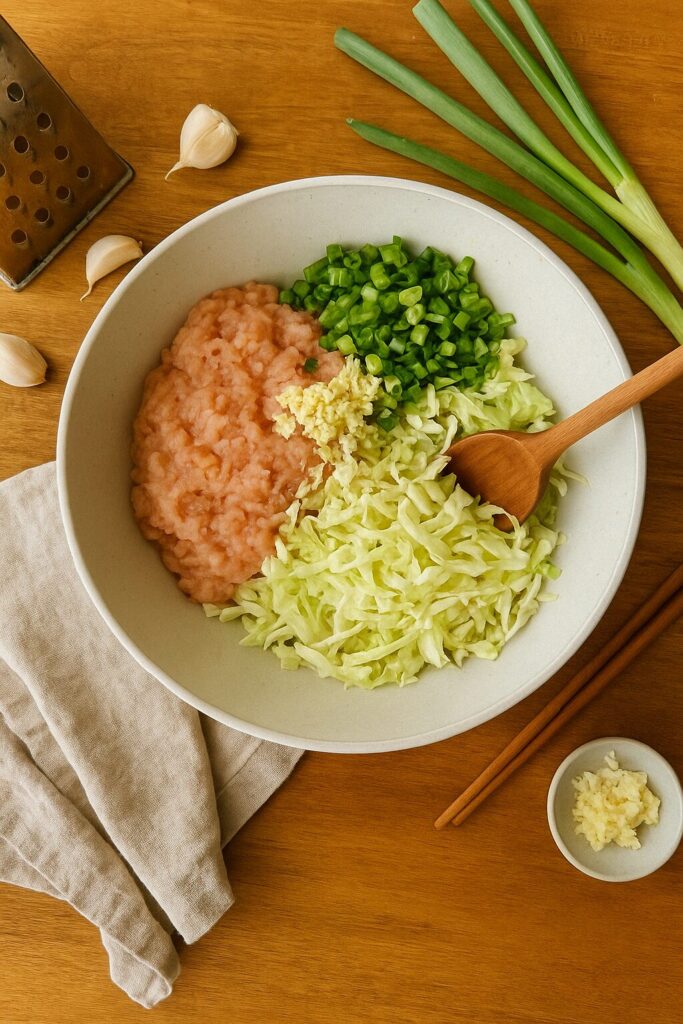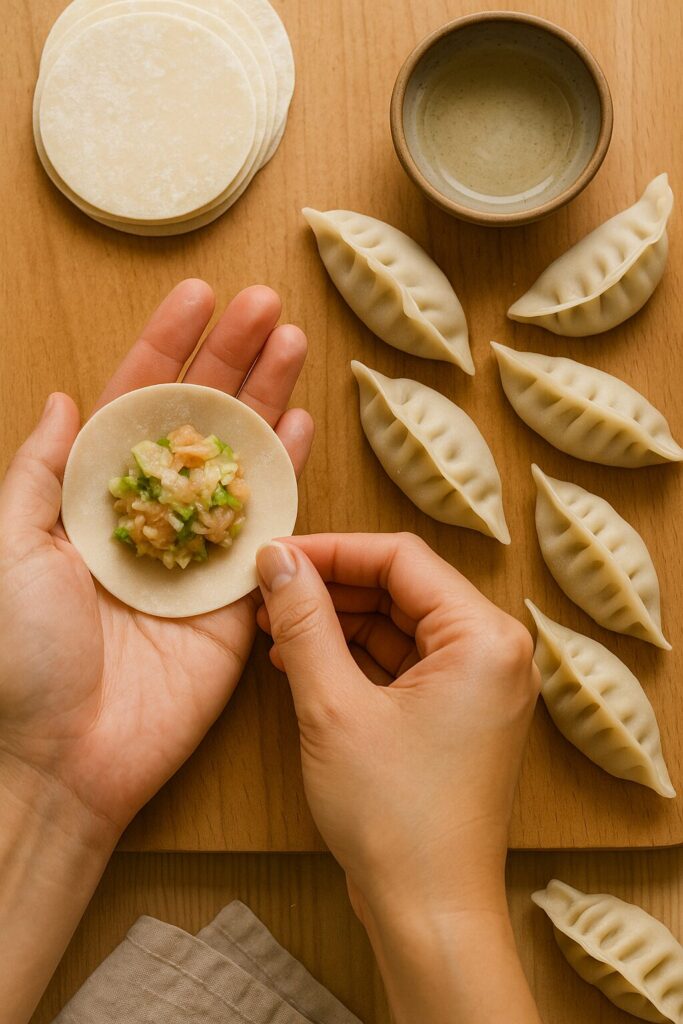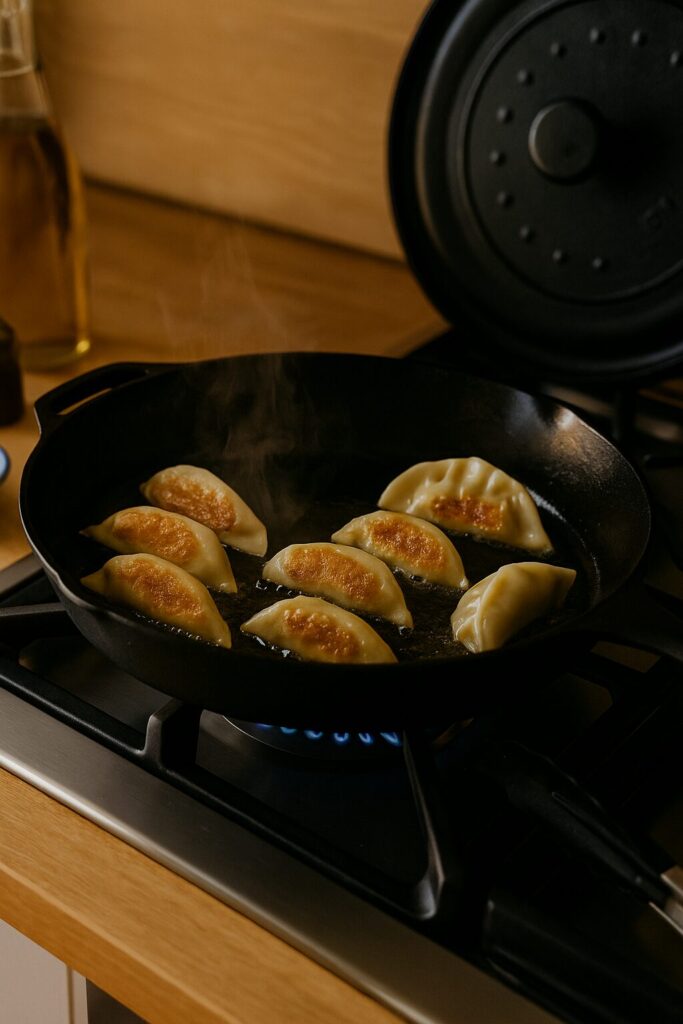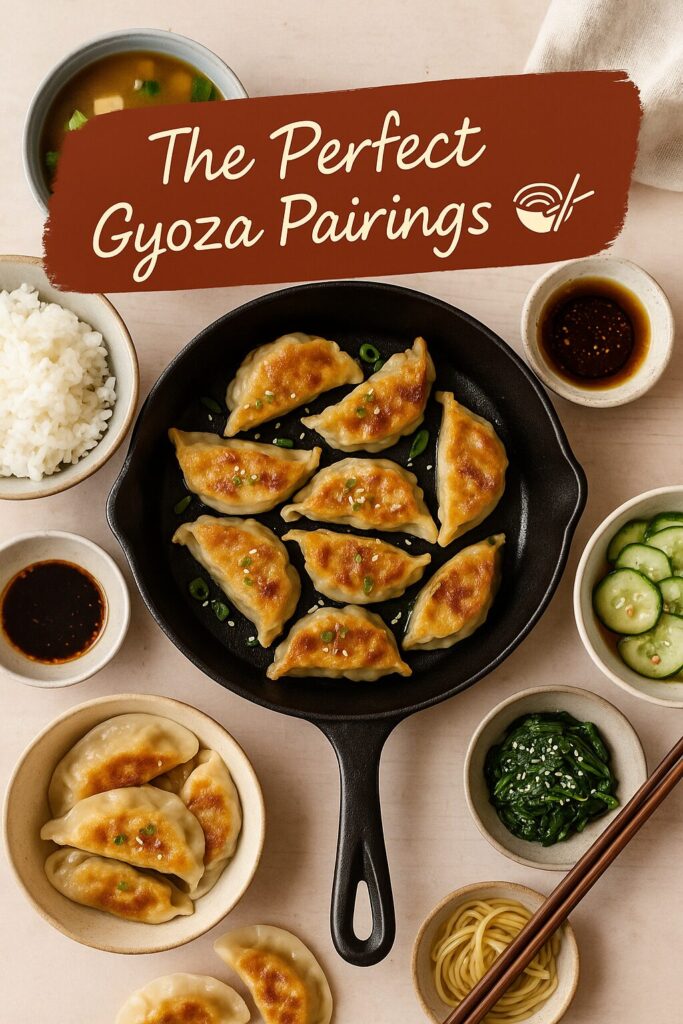If there’s one dish that never fails to lift my mood, it’s gyoza.
Those golden pan-fried Japanese dumplings—crispy on the outside, juicy and savory inside—feel like the edible version of a warm hug. They’re cozy. They’re comforting. And once you get the hang of folding them, they’re surprisingly fun to make.
Let’s dive into everything you need to know to make homemade Japanese gyoza that are just as satisfying as your favorite restaurant version.
What Exactly Is Gyoza?
Gyoza (餃子) are Japanese pan-fried dumplings inspired by Chinese jiaozi. While the concept is similar—meat and/or veggies wrapped in thin dough—the Japanese version has its own signature flavor and texture.
Most traditional gyoza are filled with:
- Ground chicken (or beef or plant-based meat)
- Napa cabbage
- Garlic
- Ginger
- Green onion
- Sesame oil and soy sauce
They’re pan-fried first, then steamed right in the pan, so you get that magical combo of crispy bottoms and tender, juicy centers.
Why Gyoza Is Pure Comfort Food
I’ve made gyoza on sick days, rainy evenings, and during stressful weeks when I just needed something grounding.
Here’s why they feel like a hug:
- You get to create something with your hands.
- The smell of garlic and sesame oil in the kitchen? Instant calm.
- Biting into that crispy bottom with the juicy filling? Pure bliss.
- Dipping them in a sweet-salty-spicy sauce? Total therapy.
And making them with friends or family? That’s an experience worth savoring.
My Favorite Gyoza Filling (Classic Chicken Version)
Here’s what I use for my go-to gyoza filling. It’s flavorful, juicy, and never dry.
Ingredients:
- 1/2 small head Napa cabbage, finely chopped
- 1/2 tsp salt (to draw out moisture from cabbage)
- 1 lb ground chicken
- 2 green onions, finely sliced
- 2 garlic cloves, grated
- 1 tbsp fresh ginger, grated
- 1 tbsp soy sauce
- 1 tsp sesame oil
- 1 tsp mirin (optional, for balance)
- 1/4 tsp black pepper
Instructions:
- Toss the chopped cabbage with salt. Let it sit for 10 minutes, then squeeze out excess moisture using a clean towel.
- In a large bowl, combine the drained cabbage with all other filling ingredients.
- Mix gently until fully combined. Don’t overmix—it keeps the filling tender.
How to Wrap Gyoza (It’s Easier Than You Think!)
Gyoza wrappers are thin, round dough circles you can find at most Asian grocery stores or in the refrigerated section of some supermarkets.
How to Fold:
- Place a wrapper in your palm. Add about 1 tsp of filling in the center.
- Dip a finger in water and moisten the wrapper’s edge.
- Fold the wrapper in half into a semi-circle. Pinch the center to seal.
- Make 2–3 pleats on one side and press them into the opposite side.
- Repeat for the other half. Seal well.
If the pleats stress you out, just press the edges shut and call it rustic—it’ll still taste amazing.
Cooking Gyoza: The Classic Steam-Fry Method
This is the technique that gives gyoza their famous crispy bottoms and juicy fillings.
You’ll Need:
- A nonstick or cast iron skillet with a lid
- 1 tbsp neutral oil
- 1/3 cup water
Instructions:
- Heat oil in the skillet over medium heat.
- Place gyoza flat-side down in a single layer. Let them sizzle for 2–3 minutes until golden underneath.
- Carefully add water and cover immediately.
- Steam for 5–6 minutes until the water has evaporated.
- Uncover and cook 1 more minute for extra crispiness.
Done! You’ve got crispy-bottomed, juicy-topped perfection.
The Essential Dipping Sauce
The dipping sauce brings the whole dish together. My favorite mix?
- 2 tbsp soy sauce
- 1 tbsp rice vinegar
- 1 tsp sesame oil
- Optional: chili crisp, minced garlic, or a pinch of sugar
Stir, taste, and adjust. It should be tangy, salty, and just a little bit sweet.
Fun Filling Variations
Once you’ve nailed the classic chicken version, try one of these:
- Beef + shiitake mushrooms for deep umami flavor
- Shrimp + chives for a light, fresh twist
- Tofu + cabbage for a vegetarian version
- Kimchi + chicken for a spicy, tangy punch
Got leftovers? Turn them into gyoza soup by simmering with broth, bok choy, and mushrooms.
Make-Ahead and Storage Tips
- To freeze: Arrange uncooked gyoza in a single layer on a tray. Freeze until solid, then store in a zip-top bag.
- To cook from frozen: No thawing needed! Just steam-fry a few minutes longer.
- To reheat: Store cooked gyoza in the fridge for up to 3 days. Reheat in a hot pan to bring back the crisp.
What to Serve with Gyoza
Gyoza are great as a main or side dish. Try them with:
- A warm bowl of miso soup
- Steamed rice or Japanese donburi bowls
- Stir-fried greens with sesame
- Cucumber salad with soy-sesame dressing
- Ramen or udon noodles
Final Thoughts: Gyoza and Cozy Moments
There’s a reason gyoza feel so nostalgic. They’re deeply rooted in tradition, often shared at the table, and always made with care.
For me, making gyoza is a slow, meditative process. The rhythm of folding, the sizzle in the pan, the aroma of sesame and ginger—it brings me back to center.
So next time you need a little extra comfort, grab your ingredients, turn on your favorite playlist, and fold some gyoza. Share them, savor them, and let them warm you from the inside out.
And if you try this recipe, I’d love to hear how it went. What filling did you use? Pleats or no pleats? Let me know!
Medical Disclaimer: This site offers educational and informational content only, not medical advice or professional services. Do not use this information to diagnose or treat health issues. Always consult a licensed physician for personal medical advice. Never delay seeking professional care or disregard medical advice due to content on this site. In emergencies, call 911 or visit the nearest ER. Use of this site does not create a physician-patient relationship, and no guarantees are made regarding the information provided.
AI Disclaimer: This site may occasionally use AI-generated images to help enhance our content.










